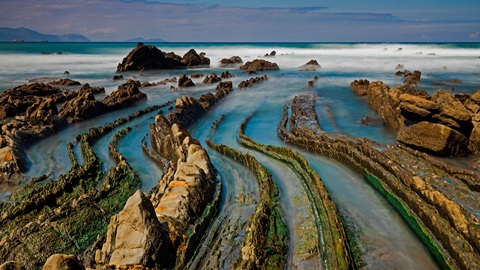Why did the last hunter-gatherers of northern Iberia collect shellfish in winter?
The last hunter-gatherer populations that occupied northern Iberia predominantly consumed shellfish during the coldest months of the year when the meat yield of molluscs was highest, according to a study led by researchers from ICTA-UAB. The study also reconstructed sea temperatures in the Bay of Biscay at the beginning of the Holocene, around 9,000 years ago, showing they were slightly warmer than today.

9,000 years ago, marine temperatures were about 2°C warmer than today.
Archaeological evidence suggests human groups exploited marine resources as food for at least 250,000 years. However, as noted by the authors of this study, published in the international journal Palaeogeography, Palaeoclimatology, Palaeoecology, “this date is likely much earlier, but evidence has yet to be discovered.” The intensive exploitation of these resources did not begin until the Mesolithic period, around 10,000 years ago, when shellfish remains, especially molluscs, became more abundant at archaeological sites, forming what are known as shell middens, common along Europe’s Atlantic coast. One of the regions with the highest density of these deposits is the Cantabrian area in northern Iberia.
Given the importance of coastal resources in the diet of the groups that inhabited the Cantabrian coast before the advent of agriculture and livestock, understanding how these prehistoric populations collected shellfish is crucial to identifying the subsistence strategies of the last hunter-gatherers. To this end, Asier García Escárzaga, ICTA-UAB researcher and lead author of the study, along with collaborators from other national institutions, applied stable oxygen isotope analysis to archaeological shells recovered from the J3 site (Gipuzkoa, Basque Country). This analysis allowed researchers to determine the time of year when molluscs died and, therefore, when they were consumed by prehistoric populations.
The study’s findings indicate that the last hunter-gatherers in northern Iberia predominantly collected shellfish in winter, coinciding with the season when this resource was most nutritionally rewarding due to gamete production. This seasonal shellfish consumption reflects an energy cost-benefit strategy and demonstrates the prehistoric populations’ deep understanding of their environment. They avoided overexploitation, ensuring food availability for future years and generations.
Additionally, isotopic results from this research enabled the reconstruction of sea temperatures in the southern Bay of Biscay 9,000 years ago. The findings suggest that marine temperatures were about 2°C warmer than today, both in summer and winter. The researchers attribute this to higher solar insolation during the summer months at the beginning of the Holocene and a greater influence of warm ocean currents in winter compared to present conditions.
A. García-Escárzaga, A. León-Cristóbal, E. Álvarez-Fernández, et al., Strengthening the evidence for seasonal intertidal exploitation in Mesolithic Europe and new insights into Early Holocene environmental conditions in the Bay of Biscay from the oxygen isotope composition of Phorcus lineatus (da Costa, 1778) shells, Palaeogeography, Palaeoclimatology, Palaeoecology (2024), https://doi.org/10.1016/ j.palaeo.2024.112624